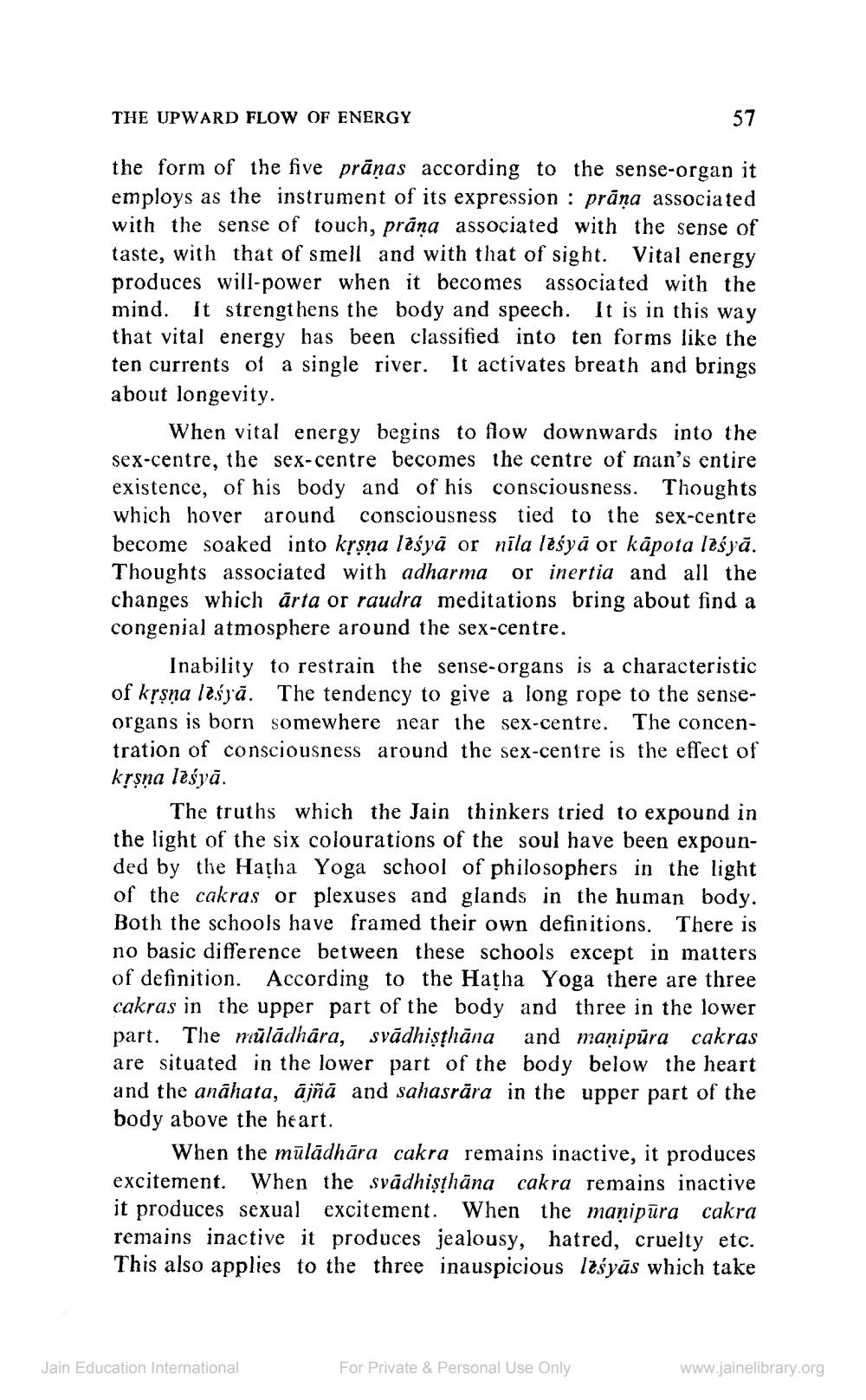________________
THE UPWARD FLOW OF ENERGY
57
the form of the five prānas according to the sense-organ it employs as the instrument of its expression : prāna associated with the sense of touch, prāna associated with the sense of taste, with that of smell and with that of sight. Vital energy produces will-power when it becomes associated with the mind. It strengthens the body and speech. It is in this way that vital energy has been classified into ten forms like the ten currents of a single river. It activates breath and brings about longevity.
When vital energy begins to flow downwards into the sex-centre, the sex-centre becomes the centre of man's entire existence, of his body and of his consciousness. Thoughts which hover around consciousness tied to the sex-centre become soaked into krsna lesyā or nila leśyā or kāpota leśyā. Thoughts associated with adharma or inertia and all the changes which arta or raudra meditations bring about find a congenial atmosphere around the sex-centre.
Inability to restrain the sense-organs is a characteristic of krsna leśyā. The tendency to give a long rope to the senseorgans is born somewhere near the sex-centre. The concentration of consciousness around the sex-centre is the effect of krsna leśyā.
The truths which the Jain thinkers tried to expound in the light of the six colourations of the soul have been expounded by the Hatha Yoga school of philosophers in the light of the cakras or plexuses and glands in the human body. Both the schools have framed their own definitions. There is no basic difference between these schools except in matters of definition. According to the Hatha Yoga there are three cakras in the upper part of the body and three in the lower part. The mūlādhåra, svādhisthāna and manipūra cakras are situated in the lower part of the body below the heart and the anahata, ajñā and sahasrara in the upper part of the body above the heart.
When the mūlādhāra cakra remains inactive, it produces excitement. When the syādhişthāna cakra remains inactive it produces sexual excitement. When the manipūra cakra remains inactive it produces jealousy, hatred, cruelty etc. This also applies to the three inauspicious lesyās which take
Jain Education International
For Private & Personal Use Only
www.jainelibrary.org




